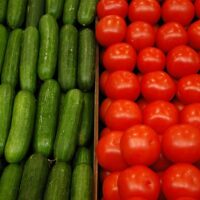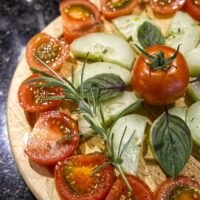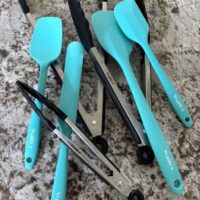Busting a Salad Food Myth and Recipe
You may have seen articles or heard claims that cucumbers and tomatoes don’t belong together on your plate or in your salad.
The reasons? Some say they digest at different rates or that an enzyme in cucumbers destroys vitamin C in tomatoes, making the combo hard on digestion or less nutritious.
In Ayurveda (an ancient system of health and healing from India that focuses on balance in the body, mind, and spirit) and other traditional systems, it’s believed that mixing foods with opposing qualities—like cool cucumbers and warm tomatoes—can make digestion less efficient and upset your body’s balance. 
Here’s what you really need to know:
🥒🍅 Yes, cucumbers do contain an enzyme called ascorbic acid oxidase, which can break down vitamin C. But this happens slowly and only in specific conditions. In a fresh salad, the effect is minimal and doesn’t cancel out the health benefits.
💪 Your digestive system is made to handle a mix of foods. Unless you have a personal sensitivity, most people don’t experience any issues from this classic combo.
🌿 In fact, pairing different veggies—like cucumbers and tomatoes—can help you get a wider range of nutrients. Add a little olive oil, and you’ll even boost your absorption of lycopene from tomatoes!
An Ayurvedic tip: If you find that raw salads don’t sit well with you, or you tend to feel bloated or sluggish after eating them, you might want to enjoy these veggies separately or add some digestive-friendly spices like cumin or black pepper.
For those of you who love this combo, here’s a recipe for the season. This is ideal for a summer lunch, picnic, or side dish.
Simple Cucumber-Tomato Salad with Lemon-Herb Dressing
Ingredients:
- 1 cup cherry or grape tomatoes, halved
- 1 large cucumber, thinly sliced or diced
- ¼ small red onion, thinly sliced (optional)
- 2 tablespoons fresh parsley or dill, chopped
- 2 tablespoons extra virgin olive oil
- 1 tablespoon fresh lemon juice
- Sea salt and black pepper to taste
- Optional: ¼ cup crumbled feta, goat cheese, or sliced avocado
Instructions:
- In a medium bowl, combine the tomatoes, cucumber, red onion, and fresh herbs.
- In a small bowl or jar, whisk together the olive oil, lemon juice, salt, and pepper.
- Pour the dressing over the veggies and toss gently to combine.
- Let sit for 5–10 minutes for flavors to blend. Add feta or avocado if desired and serve immediately.

Why it works:
- Hydrating from the cucumber
- Vitamin C from both veggies
- Lycopene from the tomatoes
- Better nutrient absorption with the olive oil
- Zingy herbs and lemon boost flavor without any processed ingredients
At the end of the day, food is meant to nourish and bring enjoyment. If you love the fresh crunch of cucumbers with the juicy burst of tomatoes, there’s no need to overthink it. Trust your body, be attentive to how you feel, and enjoy the delicious simplicity of whole foods.
Much love,
Health Coach Carol
“Three tomatoes are walking down the street-a poppa tomato, a mamma tomato, and a little baby tomato. Baby tomato starts lagging behind. Poppa tomato gets angry, goes over to the baby tomato, and smooshes him and says, Catch up.” — Uma Thurman






